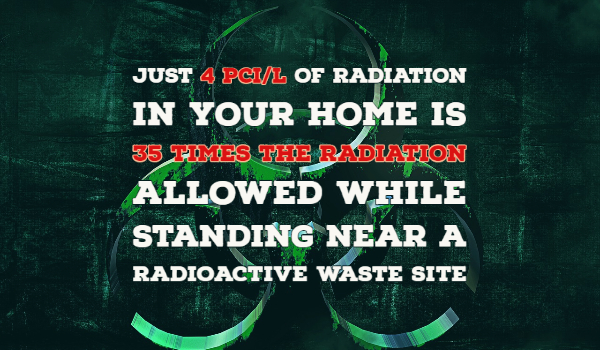The most common source of radon is the ground, from where it breaks down from uranium. Water then transports the gas from under the ground to groundwater systems. Even though the quantities of radon in water are often considered small compared to amounts in air, it can cause both lung and stomach cancer.
Radon in your home may come through entry points in the kitchen and bathroom. When water accumulates in the ground, the soil eventually becomes damp enough to carry the gas to the ground. Building materials like concrete, gypsum, construction stones act as a transport medium for radon.
Mitigation Strategies
Sealing the openings in the ground that allow the gas to leak is one part of radon mitigation. It prevents the gas from seeping through the floor. However, the pressure under the building can accumulate to the point that it allows it to pass through the concrete.
Sealing the surfaces is best used with other radon mitigation strategies. Sub-slab depressurization reduces the pressure by pulling radon from the soil and channeling it to the in the air over the house. Sealing facilitates the process by increasing the suction effect. All significant openings in the floor must be sealed. That also ensures that no gas will escape back into your home during depressurization.
If the water is contaminated, another radon mitigation method is aeration. The process involves passing air through water. The bubbles can carry the gas and remove other contaminants present in the fluid, such as Volatile Organic Compounds (VOC).
Basements and Crawlspaces
If you have a basement, your home can be particularly vulnerable to contamination. The toxic gas can find its way through the walls, and the floor of the room. radon testing and inspection is recommended before opting for any mitigation strategies.
One diagnostic test to check for the levels of the gas around your home is the soil communication test. A radon testing Colorado contractor may use a chemical indicator to establish how fast it spreads in the soil. Through a hole in the ground, a chemical smoke is passed to determine the speed of transmission.
For basement and crawlspaces construction, a combination of approaches is often necessary. You can start by ensuring that the room is always properly ventilated. You can use vents and fans for better air circulation. However, better circulation is only a temporary strategy.
If you are planning to remodel or put up a new building, you must apply the most effective radon mitigation strategies. Your radon testing contractor can conduct a test to determine the levels of radon in your home. The results will inform the next course of action, and the prevention process that will be most effective in keeping your home safe.
In Conclusion
Since the most common source of contamination is from the ground, you need to ventilate the lowest points in your home. Your basement and crawlspaces should disperse air, to prevent the risk of accumulation of radon gas, whether during summer or winter. Your home may be tested to check for other points of contamination, such as water draining from your kitchen and bathroom. The EPA recommends you hire a qualified contractor for radon mitigation levels exceeding 4pCi/L.


Recent Comments